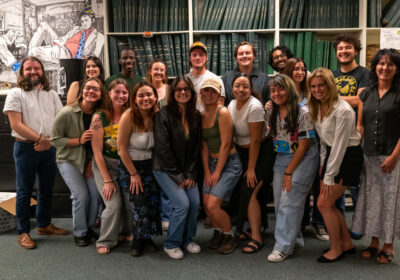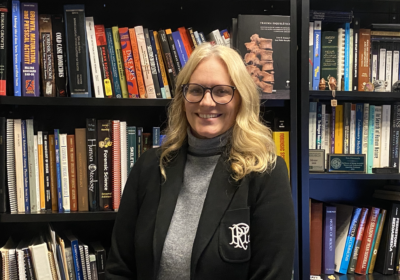Stopping the stigma of second-hand stores

Upon making any sort of plans with college students, it’s inevitable that someone might not be able to afford whatever the plans entail. However, dressing well isn’t something students should have to sacrifice while on a budget.
This lack of spending money makes everything more challenging for full-time students who are trying to support themselves. The little income college students do make typically goes toward the essentials: everything from textbooks and food to car payments and gas.
In an attempt to save money, clothing is usually something students won’t prioritize buying. However, what many don’t realize is that shopping for clothes and accessories at second-hand stores can be a lifesaver for those on a tight budget, and the clothing sold rarely lives up to the negative expectations we usually have of used clothing.
Hand-me-down companies such as Goodwill and Plato’s Closet accept garments from people who no longer have a use for them. Often, these people recently purchased the wrong size, or were unable to return their purchase for any number of reasons. The garments, most of which are in perfect condition, are then brought to the second-hand shops and could be honestly labeled “good as new.” These companies provide the perfect outlet for college students on a budget.
However, stores like these have developed an unfortunate stigma, which labels them as unsanitary and suggests they carry only oddly-sized or damaged clothing.
“I honestly don’t know where else I’d go for clothing if second-hand shops weren’t an option,” undeclared freshman Emma Kiehl said.
Many argue that second-hand clothing can sometimes be in poor condition, but Kiehl finds quite the contrary to be true.
“I’m very easily able to find clothing that looks new and fits me well,” Kiehl said.
Kiehl said she finds the most luck with casual clothing such as T-shirts and jeans, but occasionally finds a nice blouse or dress to add to her more formal wardrobe. Kiehl, however, does warn against purchasing second-hand footwear, having had experience with shoes that are more worn than meets the eye.
Another misconception about second-hand clothing stores is that they prevent consumers from being fashionable, but this is far from the truth.
On its website, Plato’s Closet touts its strict selection process of all used clothing brought to the store. The site certifies that “the gently used clothing and accessories we buy are: top-name brands, cool, hip, trendy, and in good condition.” Not only this, but the company ensures the items they purchase have been for sale in the retail stores within the past 12 to 18 months and “are current teen and young adult styles still seen in the mall.” With these guarantees, it almost seems ridiculous to purchase clothing from anywhere else.
By purchasing second-hand goods, college students are able to fulfill their need for clothing and accessories at an affordable price and still stay in the fashion loop. As the old saying goes, don’t judge a book by its cover.
By ignoring the stigma, college students can purchase perfectly good clothes for half the price of any commercial store. Though the perpetual financial struggle may halt students’ participation in many activities, it shouldn’t prevent anyone from being fashion forward.







